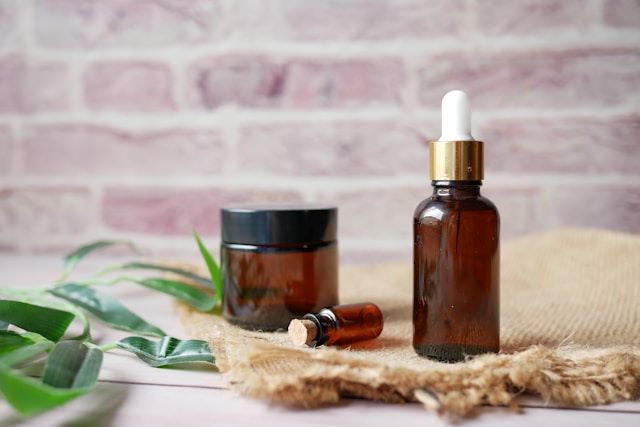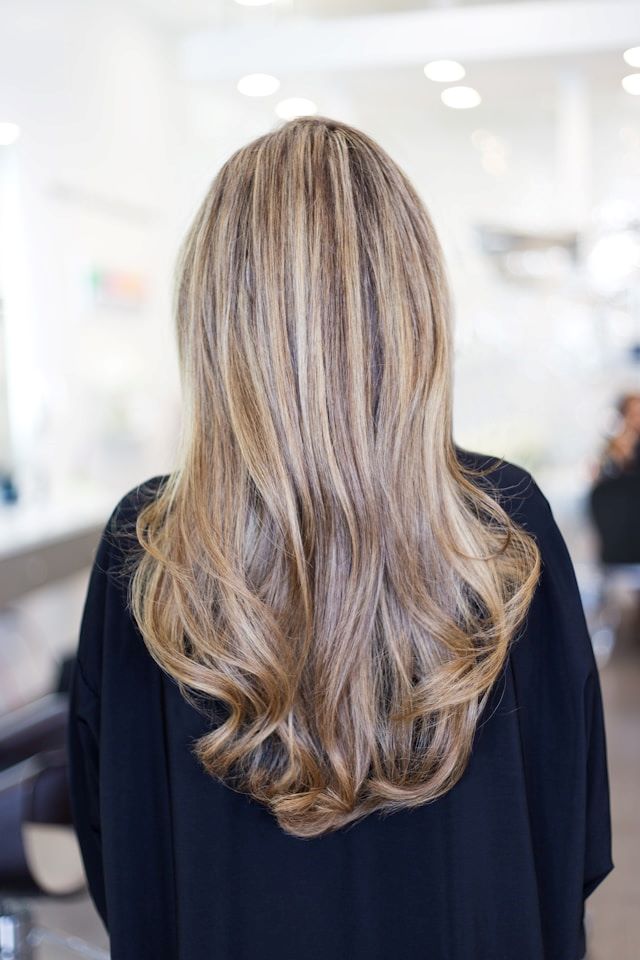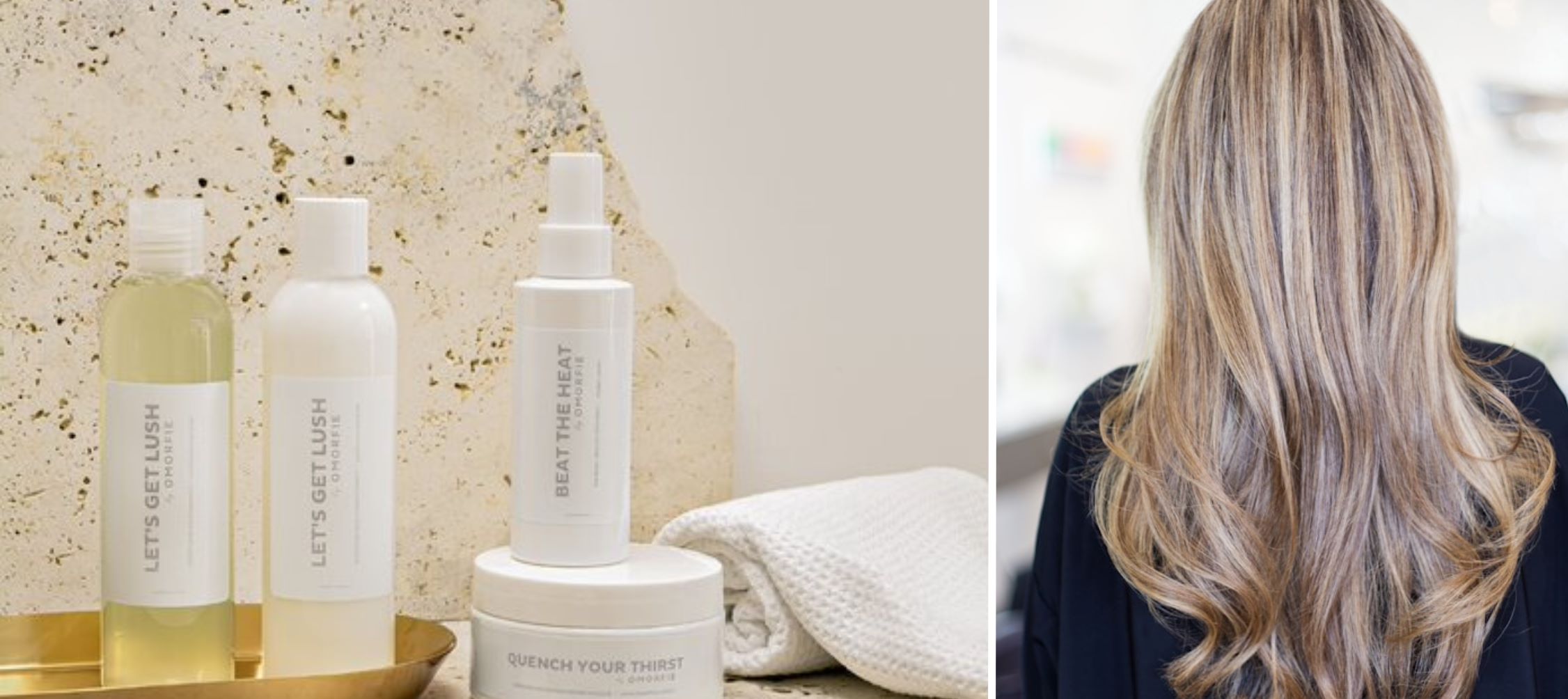Healthy hair isn’t just about the right products or diet. It’s also about regular maintenance, and that includes trims. When you regularly trim your hair, you’re not just shaping it but preventing split ends and breakage.
The Importance of Regular Trims in Maintaining Healthy Hair
Avoiding Split Ends
Split ends, a common issue for many of us, can cause our hair to look dull and lifeless. But with regular trims every 6-8 weeks, we can keep them at bay.
Beyond making your locks look luscious again, trimming off those dead ends encourages healthier hair growth. So if growing long hair is your goal – don’t skip those salon visits. Try this Hair Repair Treatment Kit from Omorfie for the best result.

Preventing Breakage
Another problem regular trims tackle is breakage. The longer we let our split ends go unchecked, the more they work their way up the shaft causing brittle strands prone to breaking off.
This might seem counterintuitive when trying to grow out your mane; however, getting frequent snips will help maintain its health while reducing damage. According to studies from the National Library of Medicine, “The best prevention strategy against weathering (damage) would be keeping healthy practices such as adequate UV protection and minimizing chemical processes.”
Maintaining Your Style
You can reveal a lot about you. Regular trims not only keep your hair healthy but also maintain its shape and style. Without regular cuts, your hairstyle can lose its form as the ends become uneven.
It’s like maintaining a good lawn – you don’t want it to get overgrown or unruly. Just think of a trim as giving your crowning glory that much-needed manicure.
Want luscious locks that don’t quit? Don’t skip those trims. Regular cuts banish split ends, prevent breakage, and keep your style sharp. Your hair is worth it. #HealthyHairTips
Choosing the Right Hair Products for Your Hair Type
Your hair deserves the best, and choosing the right products is a vital step towards healthier locks. The world of hair care can be overwhelming with an array of choices. But don’t fret. By understanding your specific hair type and needs, you can navigate this sea of options more easily.
Hair types range from dry to oily, each requiring unique care routines and ingredients. Dry hair might crave hydration from coconut oil or Argan oil, while excessively oily scalps may benefit from balancing elements like Aloe Vera.

The Key Ingredients in Hair Care Products
The most effective products often contain natural oils that mimic our scalp’s sebum – providing nourishment without disrupting its balance. For instance, coconut oil penetrates deep into the hair shaft, reducing protein loss (Key Stat 3), and making it ideal for brittle or damaged strands (Key Stat 6).
Spirulina too holds its own merits in terms of promoting thicker tresses due to the high amounts of proteins and vitamins it offers.
In the event of greasy or product accumulation, opt for shampoos with mild surfactants instead of strong ones like sodium lauryl sulfate.
Tailoring Your Selection To Suit Your Needs
If you have dry or curly locks that are prone to frizzing up at every opportunity; conditioners, hair masks, and serums containing hydrating agents like aloe vera or argan oil will be your best friends. On the contrary, for those with oily strands; using lightweight products that do not weigh down your mane while balancing scalp oils would be more beneficial.
Remember – what works wonders for someone else might not give you the same results because each person’s hair is unique. Experimenting with different ingredients and product types can help you discover what suits your tresses best.
Check out what others have said about products before you try them.
The Impact of Heat and Environmental Factors on Hair Health
Heat styling tools, like flat irons and curling wands, might give you that perfect hairstyle. But did you know they can also lead to heat damage? This damage can make your hair weak and more prone to breakage.
Avoid using hot tools every day. Limit their use to once or twice a week at most. Also, make sure to apply heat-protectant products before any heat treatment. These create a protective barrier between the tool’s high temperature and your hair shafts.
Environmental Damage: More than Just Hot Air
Besides heat from styling tools, environmental factors such as UV rays can harm your locks too. Exposure to harsh sunlight leads not only to dryness but also causes color fading for dyed hair.
To counteract this effect, try wearing hats or scarves when out in the sun for extended periods – it’s fashion with function. Using shampoos with built-in UV protection is another smart move; these help shield strands from harmful solar radiation.
Fighting Back Against Hair Damage
In addition to reducing exposure, proper care routines play an essential role in mitigating both thermal and environmental impacts on our tresses.
- An intensive conditioning regimen will replenish moisture lost due to stressors like heating tools or direct sun exposure – deep conditioners are especially effective here.
- Regular trims are another must-do, as they help eliminate split ends and prevent further damage up the hair shaft.
- Consider investing in silk pillowcases. Unlike cotton ones, these don’t cause friction against your strands while you sleep, reducing the potential for breakage.

So remember: heat styling tools and environmental factors can wreak havoc on our locks if we’re not careful. But with smart strategies like minimizing exposure to damaging elements, adopting proper care routines, and making wise product choices – healthy hair is within reach.









